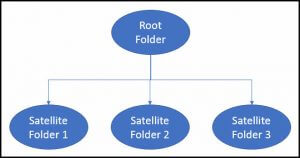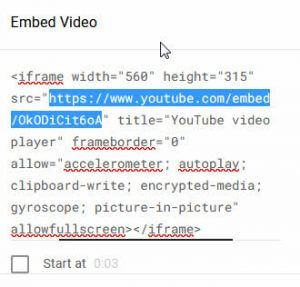OTP Data Considerations
When creating your OTP Projects and OTP Sites, you are best to assemble all the data first and then just copy and paste to the appropriate field. This will make creating your projects go much faster and smoother. It’s best to use whatever method is best for you. This could be done with Notepad, Notepad++, Word, Excel or whatever you know and find easiest to use.
OTP Projects
Each run of OTP Evolved will create one project, 1 run = 1 project. We need to gather all the data that we will be putting into Evolve. This ensures we have everything we need right in front of us to put into Evolve to create our project.
The following is the information you need to collect to run the software:
– OTP Project Name
– Type of OTP Project
– Keywords for Content
– Titles
– Target Destination URL
– Install Destination URL
– Website Images
– Header Images
– Satellite Folders Names – OPTIONAL
– YouTube video URLS
– Web Page Extention
The above items will be discussed further below.
Site Structure
How you want your site structured is something you need to decide before running your project. By structure, we are concerned with how many projects you intend to create for each site and the focused groups of keywords that you will use for each project. Each project must be uploaded to a separate folder. It is best to name that folder specific to the content on the pages to be created there. The first project should be placed in the root of the domain while subsequent projects can be placed in subfolders off the root. You would want to give the subfolder a name that says what the content in that folder is about. Keeping the content in a folder narrowly focused is important for the search engines. This allows them to easily see exactly what your content is about and understand it better. If it’s more broadly focused, then the search engines can’t really determine what your content is based on so it doesn’t regard it as heavily. This prevents your pages from getting shown in the SERPs.
Types Of OTP Projects
OTP-Evolved is capable of generating three types of OTP projects. An OTP site is generally made up of more than one OTP Project and you can use all three types of OTP Projects on an OTP Site.
Single Titles:
This feature will create the exact number of urls as the titles you enter. Example: 500 titles = 500 potential pages on your site. A lot of local marketers use the single feature so they can add in their geo locations.
You can also use the single project to create a small project for your root folder. We suggest doing this as it makes for editing your site easier when you don’t have multiple tens of thousands of pages in this folder. You can then create OTP projects using Double Titles for the rest of your projects to fill out for your site.
Double Titles:
Will create one project with one main folder. Whatever number of titles you choose to use, Evolved will take them and put one title with another until all combinations are created. So for example if you have a list of 500 titles, Evolved will create 250,000 titles from that list. This gives you a potential of 250,000 pages on your site. *If you are creating the satellites this number strategy will apply to that project as well.
When your Titles and Keywords for Content are very closely related this will build you a good Topical Authority site.
You can create several other double projects to put on that same site and use MergeMaps to connect all sitemaps so that the search engines can crawl all your folders.
This strategy is good if you have a huge list (thousands) of related titles. You could go through that list and create several folders to use up your titles.
Another good way to use a large list of titles is you divide your titles list into subniches/categories with a tool like Keyword Grouper Pro. These will all be closely related to your subniche. These categories will be the subniches of your subniche. You would use each subniche category to create a project so each subniche will have its own folder.
When using Doubles for the main/root project we recommend making a small project with a total of about 1,000 – 2,000 total combined titles. This way your public_html folder in your domain hosting will not get bogged down if you need to navigate there with File Manager (in cPanel or DirectAdmin hosting), having tens of thousands of files takes several minutes for File Manager to load the first 2000 to 10000 (this number changes with your hosting). So by keeping the root folder reasonably small, it will save you some time when you’re doing maintenance on your site.
TIP: with a 10GB shared hosting you can put approximately 8 – 10 projects of about 250,000 title on it. This is not an exact science but a loose guide to follow. You will need to keep an eye on the space you have left in your hosting account dashboard. You can always add space if you need to.
Double Titles with Satellites:
You can create a robust site all in a single run by using the satellite feature where you can create up to 20 subfolders that will be under the root/main project of your domain. In other words the satellite folders will be tier 2 in your site. Whatever number of folders/satellites you decide to create (1 – 20) is how many keywords you will need to put into the Satellites box in Evolved. How many keywords you have in that box will tell Evolved that’s how many satellites you want, ex. 15 keywords = 15 satellites/folders, 20 keywords = 20 satellites/folders. Use all lowercase and no special characters in satellite list.
You do have to check the doubles box in order to use the satellite feature. All satellites will have the same exact files in their folders as the main project, but with different urls that correspond with the folder name, ex. https://mysite.com/foldername. With using satellites you want to make sure that your titles and keywords for content are very closely related.

*** The only limit on the size of your site is the size of your hosting account. Also a lot of hosting companies will not allow you to have thousands to millions of pages. Here is one hosting company that allows this and they know what we are doing with the OTP sites and networks.
http://lw-support.com/recommends/hosixy
Titles
Keywords = Titles. We will refer to them from now on as “titles”, as this is what the keywords are used for in OTP. The titles will be used for title headings on the underlying page and also for the main title of the page. It is also what Evolved will use to create your OTP Sites page URL’s.
Titles are the most important part of the data you will gather. This is what the search engines will be looking for first when their searcher enters the phrase or word they want results for.
You want hundreds, even thousands of titles. This is easy if you use a keyword tool such as “Locustware Keyword Tool (LKT)”. Put in your seed keyword and LKT will bring you back thousands of related keywords. This will help in keeping closely related titles and keywords for content which will in turn keep titles and content closely related on our site. We are not concerned about the search volumes as we want them all, this is after all mass marketing. In the SEO terms of Topical Relevance, the search engines want you to cover all of the information on a niche/topic even if it doesn’t currently generate any traffic. LKT was created for mass marketing.
Once you have your list of titles we like to take that list and run it through a tool like Keyword Grouper Pro over at Marketbold.com. This will categorize your titles list and now you can create different projects according to your categorized list.
https://marketbold.com/KeywordGrouperPro/
Now you can take your individually categorized lists and run each through “Keyword Question Commander (KQC)”. This will give you the top questions Google has on page one for those searches. Add this KQC list to that titles list. Google really likes those search questions so this will help to get your site noticed by the search engines.
These new projects from your categorized titles list will be subniches or subniches of your subniche. All this is how we create “Topical Authority” sites that Google is now looking for.
TIP: The search engines won’t always choose your content to show their searcher. Mass marketing with OTP will greatly increase those chances because you have thousands/millions of pages out there with closely related titles and content. This is also why you want ALL the keywords in your subniche, doesn’t matter the search volume. With this winning combination, the better chance you have of the search engines serving up your page to their searcher.
Keywords for Content
Keywords for Content is the second most important data that you will be gathering. These keywords will be used to create your web page article on your OTP site.
Evolved will take your Keywords for Content and scrape the top sites on Google for that keyword. This is the content that Google says is important to them for that keyword because they have ranked it highly.
When Evolved creates your pages on your site, it will use its unique way of spinning all that content and create a unique article for each page. These are human readable articles but only Google will be reading them as an overlay will be covering this page.
When the search engine finds your title that they potentially want to show their searcher (like we talked about in the titles section) they then look at your content to see if it is related to your title. The more closely related the content is to your title the better they will like it. With that winning combination you have a much better chance that they will pick your web page to show their searcher.
Be careful when choosing these Keywords for Content. There should be a good amount of content closely related to the Titles you are using. The best way to test this if your not sure is to put your keyword into Google Search and check out the sites on the first couple pages for each of the keywords you are using. You can then see the content on each page and determine how closely it is related to the list of Titles you are using.
Checking what is on these pages can be very useful as some niches are treated differently in what pages they retrieve. For an example of a keyword that brings back bad content, do a Google search for “cheap flights”. See how a lot of the sites are actual airline ticket venues with a bunch of numbers and dates? That makes for really bad content that will not get your site any traffic. If you are selling a guide for Tips on How to Travel Cheap, then you will need to niche way down (subniches and subniches of subniches) to get those good content keywords and titles.
Images for Your OTP Site
For your project you will have two different types of images.
– Background Images
– Website Images
The background image is a large image that extends across your web page. This image goes behind your overlay so it will be visible on each side of your overlay when that page is viewed in a browser. Therefore you will want images that will look good with your overlay. When selecting or creating background images, consider what your overlay will look like on top of it. You don’t want the background to distract the visitor when they view your page. Creating simple background images will allow you to use them for many projects and traffic networks. MS Powerpoint is a really simple way to create them.

A good size for the Background Image is 1920×1200 px. You can use one image or several that will rotate each time a visitor comes to your site and a new page is created.
The Website Images will be ones that are displayed on your web pages that OTP-Evolved creates. Your visitors will not see these images, only Google will and it will help your site look authentic to Google. The size of these images depend on the Evolved website theme that you use. The default theme images are 348×232. There are 18 images that display on the page created by the default template. Evolved will randomly pick from your images and insert one in the page it is creating. These are your content pages only search engines will see. Consider the number of urls that you will be creating in your project to guide you on how many images to use. Using many thousands of images is not unusual for larger projects. All images should be related to the niche or better yet that specific project.
The names of your images should not have spaces in them. If they do, use a program like Text Swarm to replace spaces with nothing or a dash.
Where to find them: There is a long list of free image site in the Resources section of the Learning Center with direct links to the sites. Free Image Sites
How to get them: There are many programs that will download the images. If you don’t have something to use, we would suggest doing a Google search for “bulk image downloaders”. I find that the browser extensions are fairly easy to use, but there are other solutions. Some tips: Don’t forget to think of the all different searches you could do to find relevant images for your site. This helps to get a larger quantity of images quickly. Also, since our images are horizontal in layout, many image sites allow you to specify that before downloading. Some image sites allow you to specify the max and min size of the image.
Do I keep them all: We suggest you look at the images that you downloaded and get rid of really small ones or filter them out before download. We need the web images for OTP to be around 348 pixels wide. So anything smaller than 275 wide is likely going to be difficult to see when it’s stretched out. You might look at the images quickly in ThumbNail view in File Manager in Windows to delete any others that don’t seem relevant.
Optimize them for the OTP site: These are the same steps you should follow for images on any website. You do this by resizing them, convert them to jpg, compressing them, renaming them and stuffing with metadata. Most decent image editors should be able to do resizing, converting and compressing. If you don’t have such a program, you could try the free software called Flexxi that will do all three. Then open up MultiVid Commander and it will take care of the renaming and stuffing the metadata.
Videos for Your OTP Site (Optional)
In Evolve you have the “option” of embedding video on your pages. It will depend on the page template being used. The default template that comes with OTP-Evolved does have a video. So if you are using this template, you will need to provide a list of YouTube video embed URLs. If you have videos of your own or anyone elses that you would like to embed on your pages then all you need is the YouTube video embed urls. You can find this by clicking the Share button while viewing the video in YouTube and then clicking on Embed. You want the url as shown in the following image in blue: Keep your videos closely related to your content and titles.
Keep your videos closely related to your content and titles.
If your needing some video url’s, LinkSwarm’s Video Url Scraper will bring you back video urls for the keyword that you give it.
Once your Evolved project is done you will put these video urls in the ytvids.txt file that is created in the Assets folder. Evolved will then randomly grab a video url and place it in the page it is creating.
Traffic Network Template – Excel
This template is provided to allow you to collect the data needed for creating your own OTP Traffic Network. Feel free to change it the best suits your workflow.
